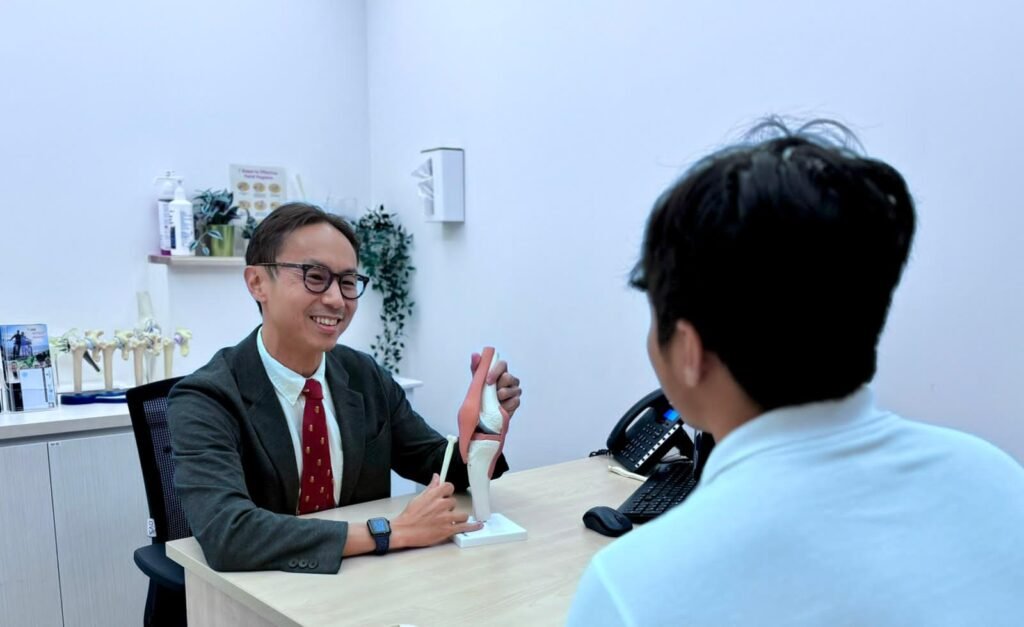Trigger finger occurs when the flexor tendons in the fingers become inflamed and swollen, making it difficult for the tendon to glide smoothly through the sheath surrounding it. This can cause the finger to become stuck in a bent position and then suddenly snap straight, much like pulling and releasing a trigger.

Trigger finger occurs when the flexor tendons in the fingers become inflamed and swollen, making it difficult for the tendon to glide smoothly through the sheath surrounding it.
Trigger finger, medically known as stenosing tenosynovitis, can be caused by various factors, particularly those involving repetitive strain or specific health conditions. Sports that require frequent and intense use of the fingers for gripping, such as climbing, weightlifting, or racket sports, can lead to the development of trigger finger. The continuous strain on the tendons and repeated flexing motions increase the risk of inflammation and thickening of the tendon sheath, which can cause the tendon to catch or lock. Athletes engaged in sports with repetitive hand movements, like rowing, gymnastics, or basketball, may experience overuse injuries. These injuries can cause micro-tears and inflammation in the tendons, contributing to the development of trigger finger.
Direct injuries to the hand or fingers during sports activities, such as jamming a finger in basketball or sustaining a hit while playing contact sports, can lead to the formation of scar tissue. This scar tissue can interfere with the smooth movement of the tendons, increasing the risk of trigger finger.



Pain:
Athletes may experience pain at the base of the affected finger or thumb, especially during or after activities that require gripping, such as holding a racket, barbell, or climbing holds.
Locking and Popping:
Athletes might feel a locking, popping, or catching sensation when bending or straightening the finger. This can hinder their ability to perform smooth and coordinated hand movements, essential in sports like basketball or gymnastics. In severe cases, the finger may become stuck in a bent position, causing significant impairment.
Swelling:
Swelling around the affected finger or thumb is common. This swelling can make the finger appear puffy and may limit the range of motion. For athletes, this can be particularly problematic, affecting grip and dexterity in sports that require precise hand movements.
Reduced Strength:
Athletes may notice a decrease in grip strength. This can be especially evident in sports that require strong hand grips, such as rock climbing, weightlifting, or tennis. Reduced strength can impact performance and increase the risk of dropping equipment or losing control.
Visible Changes:
In some cases, visible changes in the shape of the finger may occur. This could include a slight curve or bend in the affected finger when it is supposed to be straight, which is more noticeable when compared to the unaffected fingers.
Clicking Sensation:
Along with locking and popping, a clicking sensation may be felt as the tendon moves through the narrowed sheath. This can be an audible click or a feeling of the tendon snapping back into place, which can be unsettling during sports activities.
When non-surgical treatments fail to alleviate the symptoms of trigger finger, surgical intervention becomes necessary. Surgery aims to release the constriction of the tendon sheath, allowing the flexor tendons to move smoothly without catching or locking.
Percutaneous Release
A Minimally Invasive Procedure: Percutaneous release is a less invasive surgical option that involves using a needle to cut the tendon sheath, providing relief from the constriction. The surgeon inserts a needle into the skin near the base of the affected finger. Using ultrasound guidance or tactile feedback, the surgeon maneuvers the needle to cut through the thickened tendon sheath. This surgery is relatively quick, often completed in about 15-30 minutes.
Advantages:
Since the procedure does not involve large incisions, it results in minimal scarring and a lower risk of infection. Patients generally experience a faster recovery compared to open surgery. Many can return to normal activities within a few days, although full healing may take a few weeks. Percutaneous release is typically done on an outpatient basis, allowing patients to go home the same day.
Considerations:
The surgeon does not have direct visual access to the tendon sheath, which can sometimes result in incomplete release and there may be a slightly higher risk of recurrence compared to open surgery.
Open Surgery
Open surgery provides the surgeon with direct visual access to the affected tendon and sheath, allowing for a precise and complete release. The surgeon makes a small incision, usually about 1-2 centimeters long, in the palm of the hand near the base of the affected finger. The surgeon carefully exposes the tendon sheath and cuts through the thickened area to release the constriction. This allows the tendon to glide freely.
Advantages:
The direct visual access provided by open surgery ensures a more thorough release of the tendon sheath, reducing the risk of incomplete release or recurrence. It also helps the surgeon assess the tendon and surrounding structures for any additional issues that may need to be addressed during the procedure.
Considerations:
Open surgery generally requires a longer recovery period compared to percutaneous release. Patients might need several weeks to fully heal and regain strength and flexibility. There is a small risk of scar formation and stiffness at the incision site, which can be mitigated with proper post-operative care and physical therapy.
Despite being a more invasive procedure, open surgery is often performed on an outpatient basis, allowing patients to return home the same day.
Rehabilitation:
Physical Therapy:
Engaging in a structured physical therapy program is crucial for restoring range of motion, strength, and flexibility in the affected finger and hand. A physical therapist will tailor exercises to the patient’s specific needs and recovery stage. Initially, exercises will focus on gentle movements to avoid stressing the surgical site. As healing progresses, the intensity and complexity of exercises will increase. Common exercises may include
Monitoring:
Scheduled visits with the healthcare provider are essential to monitor healing progress. During these appointments:
The healthcare provider should assess the range of motion, strength, and function of the affected finger and adjust the rehabilitation plan as needed.
Key Takeaway
Trigger fingers can significantly impact daily activities and athletic performance. Understanding the causes, symptoms, and treatment options is key to managing this condition effectively. Early intervention, whether through non-surgical or surgical means, can help restore finger function and prevent long-term complications. If you’re experiencing symptoms of trigger finger, don’t hesitate to seek professional medical advice.
Visit Apex Sports Clinic for a comprehensive evaluation and personalized treatment plan, ensuring you get back to your game.
Elevate your performance with Apex Sports Clinic! Schedule an appointment today for personalized, expert care in optimizing your athletic potential.


